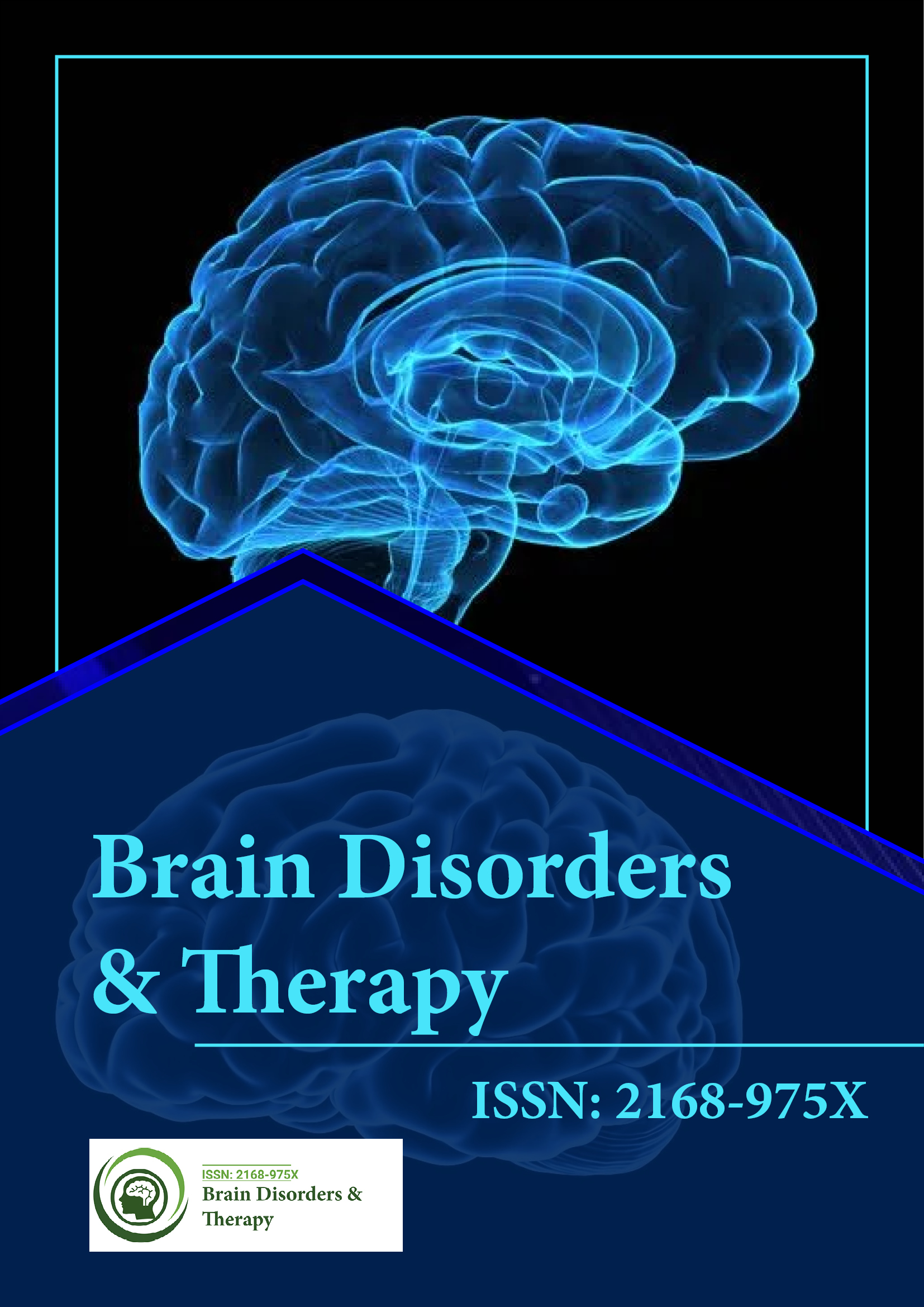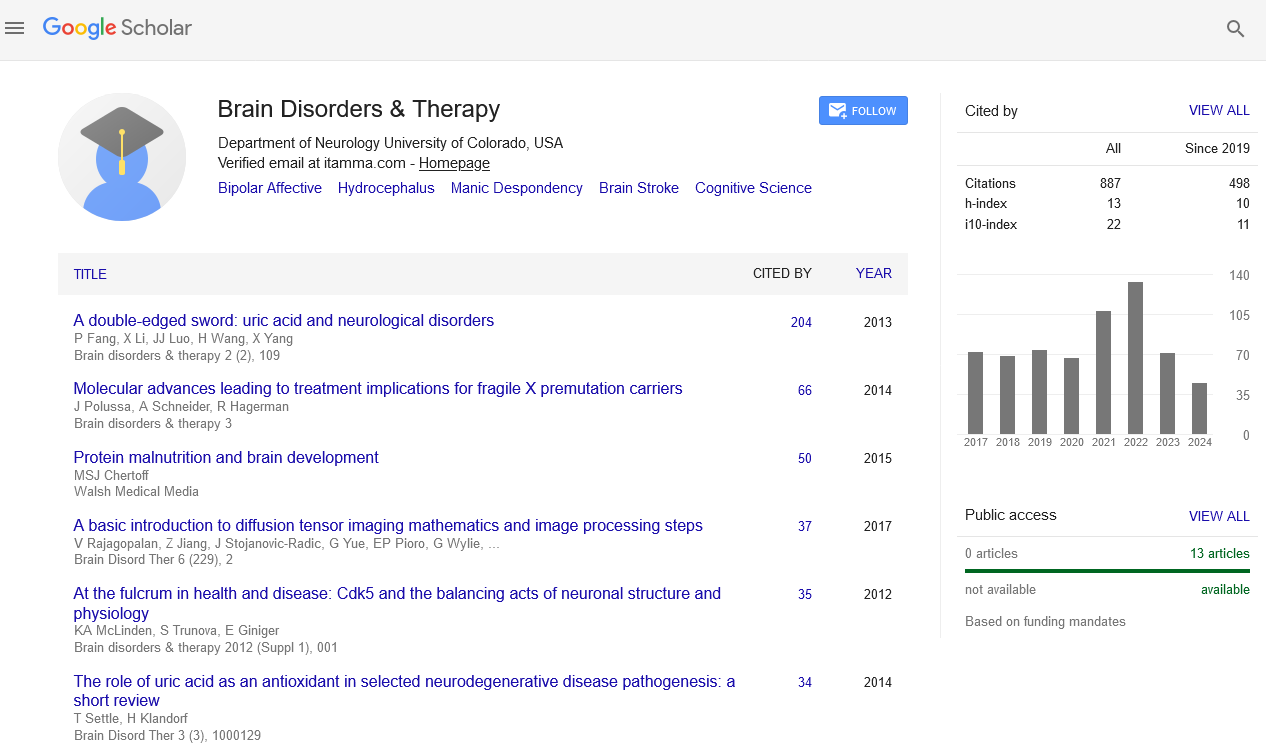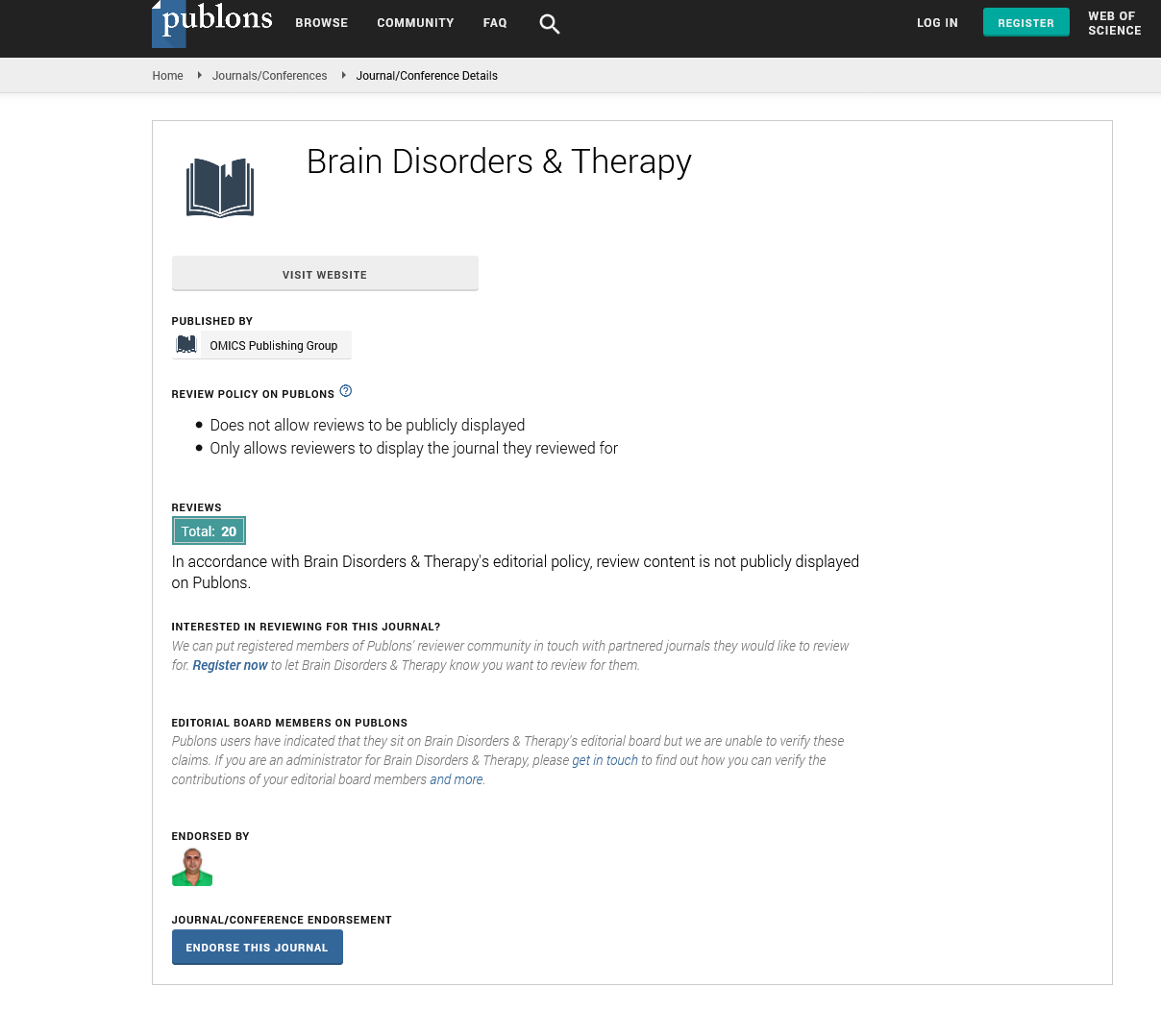PMC/PubMed Indexed Articles
Indexed In
- Open J Gate
- Genamics JournalSeek
- JournalTOCs
- RefSeek
- Hamdard University
- EBSCO A-Z
- OCLC- WorldCat
- Publons
- Geneva Foundation for Medical Education and Research
Useful Links
Share This Page
Journal Flyer

Open Access Journals
- Agri and Aquaculture
- Biochemistry
- Bioinformatics & Systems Biology
- Business & Management
- Chemistry
- Clinical Sciences
- Engineering
- Food & Nutrition
- General Science
- Genetics & Molecular Biology
- Immunology & Microbiology
- Medical Sciences
- Neuroscience & Psychology
- Nursing & Health Care
- Pharmaceutical Sciences
Neurosurgical pain treatment in the head: past-presence-future
6th International Conference on Brain Disorders and Therapeutics
September 13-15, 2018 | Copenhagen, Denmark
Wilhelm Eisner
Medical University of Innsbruck, Austria
Keynote: Brain Disord Ther
Abstract:
Introduction: In the last 30 years neuromodulation by deep brain stimulation gained widely acceptance starting in the field of movement disorders. In pain syndromes deep brain stimulation is far less effective. The results in nociceptive pain syndromes are around 50% and in neuropathic pain syndromes less than 50%. For the last 25 years the author has focused on neurosurgical pain therapy by neuromodulation. Material & Methods: We will provide a historical overview on neurosurgical pain therapy of the head and on the pain matrix evolved by imaging studies. Further we will demonstrate our development of deep brain stimulation consisting of two electrodes per cerebral hemisphere and our achievement of pain free patient including normalization of sensory function. Out of 46 treated patients with neuropathic pain syndromes we had a group of 12 patients with neuropathic pain of the face. 50% showed a severe sensory deficit for touch-, pain-, warmth- and cold sensation. All patients had pre- and postoperative neurophysiological-, neuropsychological examination beside of pain questionnaires. Further quantitative sensory testing (QST) in neuropathic areas and normal area in the contralateral face side were performed before and after surgery. We examined six women from 29 to 65 years of age with pure trigeminal neuropathia. All patients were treated with two electrodes in the same side of the pain. One electrode was reaching from a precoronal approach the ventral posteromedial nucleus (VPM) thalamic area and one electrode was inserted from a parietal approach into the posterior limp of the capsula interna by stereotaxy. 3T MRT and stereotactic computed tomography angiography were fused to gain maximum information and safety. Operation was performed under intubation anesthesia. Tractography was showing motor and sensory fiber tracts. All patients got neuropsychological testing of memory and cognition pre- and one year postoperatively to detect stimulation induced changes. Results: All six patients lost allodynia, hyperpathia and dysesthesia. Pain did not exist anymore. Touch and repeated touch was not provoking pain anymore. All patients gained a relief of the permanent burning pain followed by normalization of sensory function in the face as it has been before the neural trauma. Neuropsychological testing showed no change in memory and cognition before and one year after surgery. We will give examples of the treatment on peripheral neuropathic pain syndromes and central neuropathic pain syndromes such as thalamic pain syndromes. Conclusion: Our method against neuropathic facial pain is high effective and safe as it is in other neuropathic pain syndromes. More than five years of stable and successful treatment urge to perform prospective randomized and blinded trails.
Biography :
Wilhelm Eisner studied Chemistry and Medicine at the University of Cologne, Mainz and Munich. Until 1999, Medical University Munich and since 1999 Medical University Innsbruck. At the LMU Munich he got his general neurosurgical training. In Bern, Munich, Pittsburgh, Cologne he got special training in Electrophysiology, Functional Neurosurgery, Stereotaxy and Radiosurgery. He was a founding member of the team (H J Reulen) who introduced awake craniotomy in Oncologic Neurosurgery in Europe in 1988 in Bern; Swiss and 1991 in Munich, Germany. He has a main concern of functional integrity of neurosurgical patients therefore he built up a reputation in intraoperative electrophysiology internationally in the beginning of the 1990’s. His second and predominant subject is deep brain stimulation in movement disorders and pharmaco resistant pain syndromes, beside psychiatric disorders and radiosurgery. He is the Founder and Head of the Austrian Society of Stereotactic and Functional Neurosurgery, Radiosurgery, Intraoperative Electrophysiology, Intraoperative Imaging beside member of the board of the Austrian Pain Society, Vice President of the German Society of Neuromodulation. He is Lecturer at the Medical University Innsbruck, Mozarteum Salzburg/Innsbruck, Danube University Krems beside many other academic functions. He published more than 100 articles and gained 3788 citations, RG score 35.29, CI 332.
E-mail: wilhelm.eisner@i-med.ac.at


